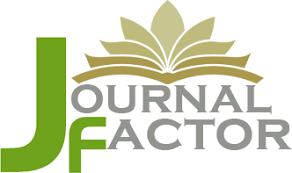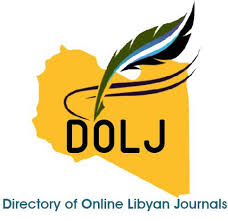The major causes of chronic and complication kidney disease and side effect of immune suppressive medications in Zawia patients kidney translation
DOI:
https://doi.org/10.54361/Keywords:
Renal failure, kidney transplantation, cyclosporine,, tacrolimusAbstract
Identification of causes and complications of chronic kidney disease in patients on dialysis is essential
for improving the quality of patients life. Immunosuppressive or immune suppressant drugs or antirejection drugs are employed to prevent different autoimmune diseases. The major side effects of
these drugs are hypertension, hyperlipidemia, and hyperglycemia. 60 patients undergoing dialysis
treatment for more than six months were studied in Zawia kidney hospital. The major cause of endstage renal disease patients was non genetic (50%), genetic (41.7%), followed by unknown (8.3%). 50
patients for the maintenance immunosuppressive regimen of the study population mainly included
Cyclosporine, and Tacrolimus. The result shown that, 45 patients had hypertension after kidney
transplantation about 90% of all patients, followed by 34 patients had high level of cholesterol, while
31 patients had diabetes after kidney transplantation in this study, there for explain more the
complication of immune suppressive drugs. Conclusion, The kidney failure patients is an incurable
and continued progression disease that has dialysis as a treatment, or kidney transplantation, Finding
All renal allograft recipients experienced are related to the adverse reaction. Prolongation of
immunosuppressive treatment resulted in an increase in adverse drug reactions.
Downloads
References
E. Tzanakaki, V. Boudouri, A. Stavropoulou, K. Stylianou, M. Rovithis, Z. Zidianakis. Causes and complications of chronic kidney disease in patients on dialysis. (2014); Health science journal 8; (343-349).
Ramana K v. Dialysis: A Review of the Mechanisms Underlying Complications in the Management of Chronic Renal Failure. (2017). Research gate; 1603 (1-8).
M. Bodnar-Broniarczyk, M. Durlik, T. ˛aczkowska, K, C. ´nska, Ryszard Marszałek, and T. Pawi ´nski. Kidney and Liver Tissue Tacrolimus Concentrations in Adult Transplant Recipients—The Influence of the Whole Blood and Tissue Concentrations on Efficiency of Treatment during Immunosuppressive Therapy.(2021) Pharmaceutics, 13, 1576.
A. Jagpal, s. Das De , S. Singh Avtaar Singh, A. Kirk. Is Tacrolimus more likely to induce diabetes mellitus than Ciclosporin in heart transplant patients?.(2018).2;24(1-14).
M. Yousif Mahmood, J. Ibrahim Rasheed, M. Rasool Hussein. Comparison of side effect between cyclosporine and tacrolimus as immunosuppressive therapy in Iraqi kidney transplant recipients. (2020). Annals of Tropical Medicine & Public Health, 23; 13B(1-8).
Arnadottir M, Thysell H, NilssonEhle P. Lipoprotein levels and Post –heparin lipase activities in kidney transplant recipients: cyclosporine versus noncyclosporine-treated patients. Am J Nephrol 1991; 11: 391. http://www.ljmr.com.ly/ eISSN:2413-6096 Libyan J Med Res. 2022;16(1):13-23 00
L. R Thacker, S. Selman, A. Osama Gaber, and J. Jonsson. (1998) Effects of tacrolimus on hyperlipidemia after successful renal transplantation: A Southeastern Organ Procurement Foundation multicenter clinical study. Transplantation 65(1):87-92.
Irwin M. and S. R. Rosenthal. Immunomodulators. (2018) IBD Help Center, 888-694-8872.
Derick A. Kalt, BS, CLS. Tacrolimus: A Review of Laboratory Detection Methods and Indications for Use. (2017). Lab Medicine;48; (e62–e65).
Simpson D. New developments in the prophylaxis and treatment of graft 11. versus host disease. Expert Opin Pharmacother. (2001); 7 : (1109– 1117).
M. Karapirli, M. Kizilgun, O. Yesilyurt, H. Gul, Z. Ilker Kunak, E. Ozgur Akgul, E. Macit,T.Cayci, Y. Gulcan Kurt, I. Aydin, H.Yaren, M. Seyrek, E. Cakir, and H. Yaman. Simultaneous Determination of Cyclosporine A, Tacrolimus, Sirolimus, and Everolimus in Whole-Blood Samples by LCMS/MS. (2012). The Scientific World Journal. , Article ID 571201; (1-8).
J. M. Barbarinoa, C. E. Staatze, Raman Venkataramananc,d, T. E. Kleina, and R. B. Altmanb. PharmGKB summary: cyclosporine and tacrolimus pathways. (2013). Pharmacogenet Genomics ; 23(10): 563–585.
De Jonge H, de Loor H, Verbeke K, Vanrenterghem Y, Kuypers DR. In vivo CYP3A4 activity, CYP3A5 genotype, and hematocrit predict tacrolimus dose requirements and clearance in renal transplant patients. (2012). Clin Pharmacol Ther.; 92:(366–375).
Moller A, Iwasaki K, Kawamura A, Teramura Y, Shiraga T, Hata T, et al. (1999). The disposition of 14Clabeled tacrolimus after intravenous and oral administration in healthy human subjects. Drug Metab Dispos.; 27; (633–636).
B. Tavira, C. Díaz-Corte, D. Coronel, F. Ortega, and E. Coto. Pharmacogenetics of tacrolimus: from bench to bedside?. (2014). Revista Nefrología; 34; (1-17).
S. Gerogianni , F. Babatsikou , G. Gerogianni , E. Grapsa, G. Vasilopoulos, S. Zyga, C. Koutis. ‘Concerns of patients on dialysis: A Research Study’. (2014). Health science journal; 8; (1-15).
Costa, Gabrielle M. A. aPinheiro, M. B. G. N.Medeiros, S. M. de Costa, R. R. de O. Cossi, M. Santos. Quality of life of patients with chronic kidneydisease undergoing hemodialysis. (2016). Enfermería Global; 43; (87-99).
X. Nistala and V. Savin. Diabetes, hypertension, and chronic kidney disease progression: role of DPP4. (2017). Am J Physiol Renal Physiol; 312; (F661–F670).
Janice P. Lea, and Susanne B. Nicholas. Diabetes mellitus and hypertension: key risk factors for http://www.ljmr.com.ly/ eISSN:2413-6096 Libyan J Med Res. 2022;16(1):13-23 02 kidney disease. (2002). The national medical association; 94 (75-155).
R. Haynes,D. Lewis, J. Emberson, C. Reith, L. Agodoa, A. Cass, J. C. Craig, D. de Zeeuw, Bo FeldtRasmussen, B. Fellström, A. Levin, D. C. Wheeler, R. Walker, W. G. Herrington, C. Baigent, M. J. Landray. Effects of Lowering LDL Cholesterol on Progression of Kidney Disease. (2014). J Am Soc Nephrol; 25 (1825–1833).
M. Florisa, N. Leporia, A. Angioia, G. Cabiddua, D. Pirasa, V. Loia, S. Swaminathanb, M. H. Rosnerb, and A. Pania. Chronic Kidney Disease of Undetermined Etiology around the World. (2021). Kidney Blood Press Res; 46; (142– 151).
S. Namazi, and I. Karimzadeh. Adverse Reactions of Immunosuppressive Drugs in Iranian Adult Kidney Transplant Recipients. (2011). Experimental and Clinical Tranplantation; 10; (1- 7).
C. Ponticelli, E. Favi, and M. Ferraresso. New-Onset Diabetes after Kidney Transplantation. (2021). Medicina; 57; (1-9).
I. Kuźmiuk-Glembina, D. Adrycha, L. Tylickia, Z. Heleniaka, H. G. Jakub, W. Przemysław, R. B. Rutkowskia, A. DębskaŚlizieńa. Treatment of Hypertension in Renal Transplant Recipients in Four Independent Cross-Sectional Analyses. (2018). Kidney Blood Press Res; 43; (45- 54).
B. K. Kramer, D. Del Castillo, R. Margreiter, H. Sperschneider; et al. Efficacy and safety of tacrolimus compared with ciclosporin A in renal transplantation: three-year observational results. (2008). Nephrol Dial Transplant; 23; (2386–2392).
.
Downloads
Published
Issue
Section
License
Copyright (c) 2022 Ebtesam A. Beshna, Abdurraouf M. M. Khalf, Abdurrahim A. Elouzi, Daniya A. Altarhouni, Anwaar N. Ashour, Zohra A.Saria, Shahrazad A. Eteer, Jamal A. Elbakay, Samar Benzaed (Author)

This work is licensed under a Creative Commons Attribution-NonCommercial-NoDerivatives 4.0 International License.
Open Access Policy
Libyan journal of medical Research (LJMR).is an open journal, therefore there are no fees required for downloading any publication from the journal website by authors, readers, and institution.
The journal applies the license of CC BY (a Creative Commons Attribution 4.0 International license). This license allows authors to keep ownership f the copyright of their papers. But this license permits any user to download , print out, extract, reuse, archive, and distribute the article, so long as appropriate credit is given to the authors and the source of the work.
The license ensures that the article will be available as widely as possible and that the article can be included in any scientific archive.
Editorial Policy
The publication of an article in a peer reviewed journal is an essential model for Libyan journal of medical Research (LJMR). It is necessary to agree upon standards of expected ethical behavior for all parties involved in the act of publishing: the author, the journal editorial, the peer reviewer and the publisher.
Any manuscript or substantial parts of it, submitted to the journal must not be under consideration by any other journal. In general, the manuscript should not have already been published in any journal or other citable form, although it may have been deposited on a preprint server. Authors are required to ensure that no material submitted as part of a manuscript infringes existing copyrights, or the rights of a third party.
Authorship Policy
The manuscript authorship should be limited to those who have made a significant contribution and intellectual input to the research submitted to the journal, including design, performance, interpretation of the reported study, and writing the manuscript. All those who have made significant contributions should be listed as co-authors.
Others who have participated in certain substantive aspects of the manuscript but without intellectual input should only be recognized in the acknowledgements section of the manuscript. Also, one of the authors should be selected as the corresponding author to communicate with the journal and approve the final version of the manuscript for publication in the LJMR.
Peer-review Policy
- All the manuscripts submitted to LJMR will be subjected to the double-blinded peer-review process;
- The manuscript will be reviewed by two suitable experts in the respective subject area.
- Reports of all the reviewers will be considered while deciding on acceptance/revision or rejection of a manuscript.
- Editor-In-Chief will make the final decision, based on the reviewer’s comments.
- Editor-In-Chief can ask one or more advisory board members for their suggestions upon a manuscript, before making the final decision.
- Associate editor and review editors provide administrative support to maintain the integrity of the peer-review process.
- In case, authors challenge the editor’s negative decision with suitable arguments, the manuscript can be sent to one more reviewer and the final decision will be made based upon his recommendations.











